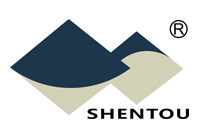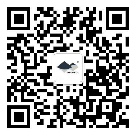CHINA AUTOMOTIVE SUPPLIER QUALITY MANAGEMENT BRIEFING
04/01/2022
Vol. 6, No. 2, April 2022

① QUALITY CHALLENGES & SOLUTIONS WITH YOUR SUPPLIERS IN CHINA
Factory Audits & Quality Inspections
During & Post COVID-19:
On-site Supplier Audits + Remote Participations by International Buyers(X)
(Continued from the last issue)
▌Implementation of “on-site + remote” product inspections
undefined
Pre-production Inspections
When orders are placed, factories would start the pre-production preparations according to the pre-agreed delivery schedule, including: internal production order review, production scheduling, raw material procurement, incoming quality control, staff assignment, production equipment allocation, technical process confirmation, etc.
So when we receive the factory’s production plan, we can clearly tell the complete order production schedule, including the starting and ending time of each stage, the associated departments and responsible staff.
Pre-production inspection primarily applies to the order fulfillment of OE or major projects, where customers have higher requirements for product quality, quality control capability of the production process and the on-time delivery.
Pre-production inspection is usually done, based on the factory’ production schedule, on-site at raw material incoming or before the start of the production, to check the pre-production readiness of the factory. The inspection mainly covers the following:
A. Has the order been actually reviewed? Did the main departments or persons for the review, e.g. the General Manager and the departments of Sales, Technical Process, Quality, Purchasing, Production & Finance, actually participate? Was the review complete, e.g. could the required delivery schedule be met and if there are any production bottleneck? Has the technical department confirmed the product technology and process for the order? Can the on-site measuring tools and tooling meet the inspection needs? Are all materials purchased and coming in on schedule? Is production equipment on normal status? Are production staff sufficient? Has the Finance department allocated sufficient capital for material purchase?
B. Verify on-site if the raw materials at the factory or in storage can meet the order need. Spot-check newly purchased incoming materials and the main raw materials already in the warehouse if they meet the requirements. For suppliers with no capability of self-testing, ask for material test report from their own suppliers or third-parties.
C. Verify the readiness of the technical, process and inspection documents for the part numbers in the order.
D. Verify the on-site production equipment, tooling and staff match the order and scheduling, with no conflict with other orders being produced.
E. Verify the lab, measuring and testing tools meet the inspection requirements, the lab staff is qualified and has sufficient time to complete the tasks.
F. Verify the factory has contingency plans in the emergency event of electricity cutoff, production line staff shortage, equipment breakdown or tooling damage.
In summary, pre-production inspections are the checking and supervision of the pre-production preparations of the factory, usually carried out by a capable and experienced third-party quality inspection service provider, to ensure the quality, quantities of the orders could be delivered on time.
During-production Inspections
During production inspections usually refers to the inspection conducted in the middle of the production cycle. The exact time of during-production inspection should be decided depending on the product, with different timing for different products. The recommended principles in the determination of the during-production inspection timing are:
A. For products made of single material and simpler production process (without assemblies), during-production inspections are applied to processes with product and process characteristics that impact product performances. Inspection timing will be determined depending on different production processes. For the production of products such as brake discs and drums, which mainly consists of casting and machining, during-productions are usually done at casting. For the production of wheel rims, which consists of stamping, welding of rims and spokes, and spraying, the inspection is usually done at the welding assembly of the rims and spokes.
B. For products made of multiple materials, more production processes and with assembly components, during-production inspections are usually applied to the product processes that impact product and process characteristics. Take the production of brake pads as an example, which consists of processes of material mixture, pressing, heat treatment and machining, during-production inspections are typically conducted during the processes of mixture, pressing and heat treatment. For shock absorber production, which consists processes of cylinder punching, welding, assembly and indicator testing, during-production inspections are done during the assembly and indicator testing processes.
C. Using the product and process characteristics identified in the control plan for the production to check on-site the inspection records of product characteristic and process control parameters, and to see if the inspection frequencies comply with the control plan requirements.
D. Check on-site first article inspection records for key characteristic processes and line inspection records if the recorded data comply with requirement of inspection criteria.
E. On-site spot-check the calibration records of measuring and inspections tools and if any of them is not valid.
F. On-site spot-check qualification, capability and training of operators at processes for key characteristics.
G. On-site spot-check if daily check of the production equipment is implemented.
In summary, the purpose of the during-production is to check and monitor if the factory order production complies with the pre-set control plan requirements and the associated work instructions, and whether effective controls and supervision are exercised with regard to people, machines, material, method, environment and testing.
(To be continued)
By Felix SS YUAN
② CRITICAL FAILURE MODES / QUALITY CONTROL POINTS IN FOCUS
Vehicle Windshield Washer
The vehicle windshield washer is composed of a control switch, a water storage tank, a washing pump, a water pipe, a nozzle and other components.
▌Main failure modes:
1. The motor of the pump does not run or does not spray water.
The reasons for the failure are:
A. The circuit connecting the motor and the battery is broken, including the failures of the fuse and the control switch.
B.The motor does not work, mainly because of serious wear of the carbon brushes and burning of the motor.
2. The motor is running, but the water spray is weak or does not work.
The reasons for the failure are:
A. The pipe between the water storage tank and the washing pump is blocked or the nozzle is blocked;
B. The wear of the carbon brushes leads to low spring pressure or spring failure; the heavy dirt on the commutator surface causes loose contact between the carbon brushes and the commutator; the armature coil is partially short-circuited; or the cover of the washing pump is assembled too tight, causing slower motor rotation.
▌Critical Quality Control Points and Quality Control Measures:
1. The washing pump is the core component of the vehicle windshield washer, mainly composed of motor, impeller, casing, sealing seat and other parts. Since the motor needs to be resistant to locking, the temperature resistance level of the motors’ armature coil and slot insulation should be H-level (i.e., the temperature resistance is 180 °C);
2. In order to ensure the motor durability, it is necessary to select a suitable carbon brush, and at the same time, the commutator should be treated with finish-turning and polishing to ensure sufficient life of the carbon brush.
By Patrick H HAN
③ KEY CONCEPTS & PRACTICES IN SUPPLIER QUALITY MANAGEMENT
Incoming Quality Control (IQC)
People are asking us if the Emark Certification (E11) granted by the British Type Approval Authority is still valid after the Brexit.
As the designated United Kingdom Type Approval Authority, the Vehicle Certification Agency (VCA) issues Emark approvals under the United Nations 1958 Agreement, E/ECE/TRANS/505/ Rev.2, as amended on 16 October 1995. The United Nations Economic Commission for Europe (UN ECE) and the European Union (EU) are separation organisations and the United Kingdom leaving the EU will not affect its participation in UN ECE Regulations.
Therefore after leaving the EU, the United Kingdom remains a signatory of the 1958 Agreement and its approvals will continue to be accepted by all contracting parties of the 1958 Agreement.
④ CHINA INDUSTRY & MARKET UPDATE
Cost of raw materials:
Exchange rates:
![]() USD/RMB: 1:6.3857
USD/RMB: 1:6.3857
![]() EUR/RMB: 1:6.9776
EUR/RMB: 1:6.9776
![]() RUB/RMB: 1:0.0732
RUB/RMB: 1:0.0732
April 2022
Remark: Exchange rates are 30-day average from March 27 to April 26, 2022
The above information is for reference only
⑤ IT HELPS TO KNOW...
China Supply Chain Alert
he dominating concern among the Chinese export communities currently in China is the impact from the latest round of COVID-19 outbreaks. By now, major cities in China, such as Shanghai Guangzhou and Shentou, as well as many other cities in China, have been hit by mostly the Omicron variant one after another, with Beijing probably being the next.
The situation is now most serious in Shanghai, where the entire city is basically in lockdown since late March, and cases are spreading to smaller cities around Shanghai.
Although the Shanghai port is not officially closed, not enough people are working at the port and the transportation to and from the port is heavily restricted. As a result, there are already huge congestion at the Shanghai port, and the Ningbo Port is increasingly being impacted as well. At this point, the congestion issue is likely to continue for at least several more weeks.
Meanwhile Qingdao Port in the north and Shenzhen (Yantian) port in the south are running basically as usual, with some short delays but relatively sufficient container spaces and stable freight costs.
We are however getting more reports that factories in supplier-rich regions are being locked down in many cities in order to help fight the virus.
With all these going on, it is expected that your China supply chains will be disrupted one way or the other.
Lastly, the exchange rate between CNY and USD has just witnessed substantial movements recently, with the CNY depreciating significantly against the USD in the last few days, although it remains to be seen if the trend is sustainable.
SHENTOU SUPPLY CHAIN MANAGEMENT CO. LTD. is a Shenzhen, China, based company serving international automotive clients in the implementation of their China strategies and programs. CHINA AUTOMOTIVE SUPPLIER QUALITY MANAGEMENT BRIEFING is a bi-monthly newsletter published by Shentou to address the specific and unique quality challenges and concerns international automotive companies face with suppliers in China. Comments are welcome at qms@shentou.com. Click here to subscribe.

